





STORIES OF PERSEVERANCE AND HOPE ACROSS BORDERLINES





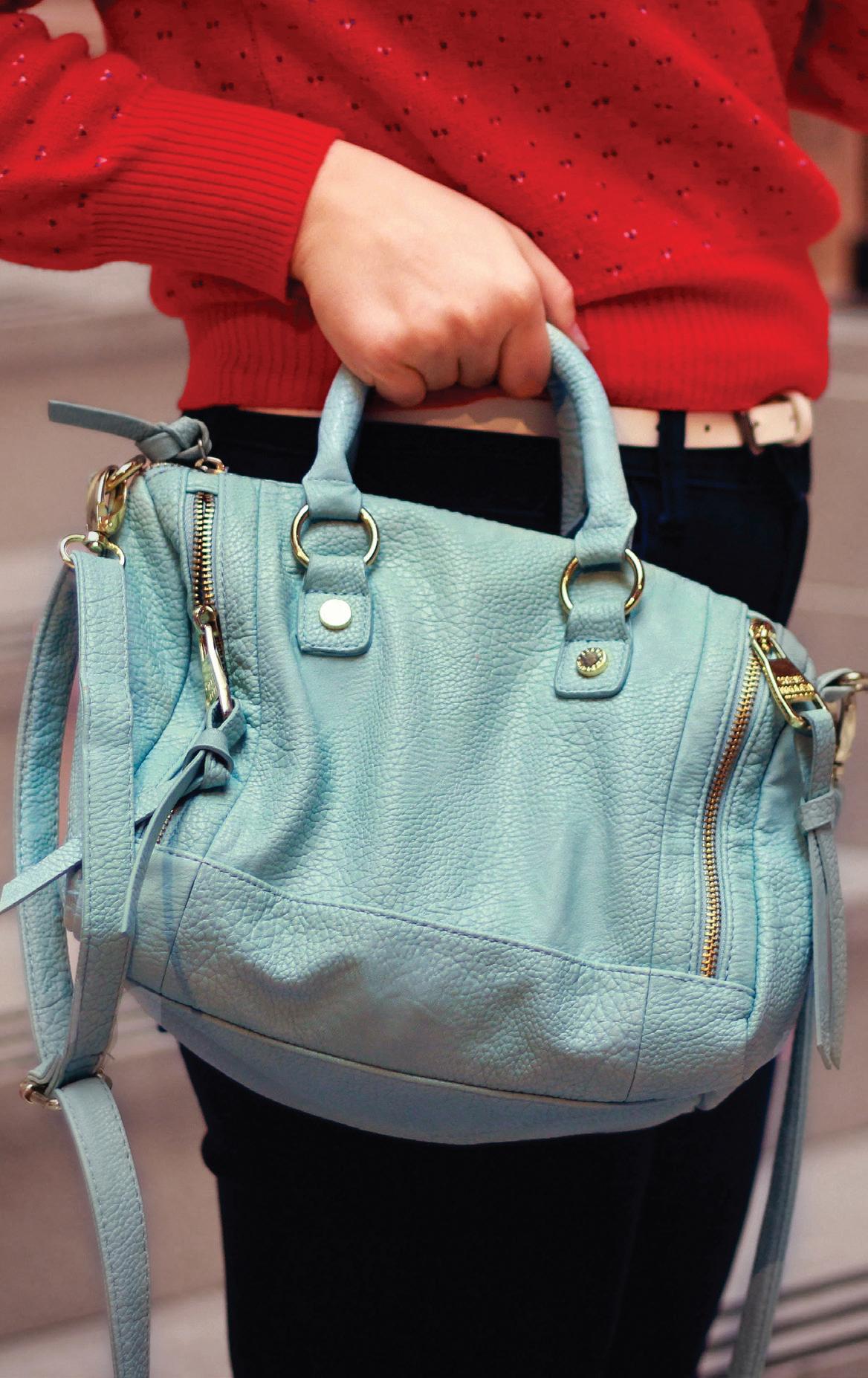
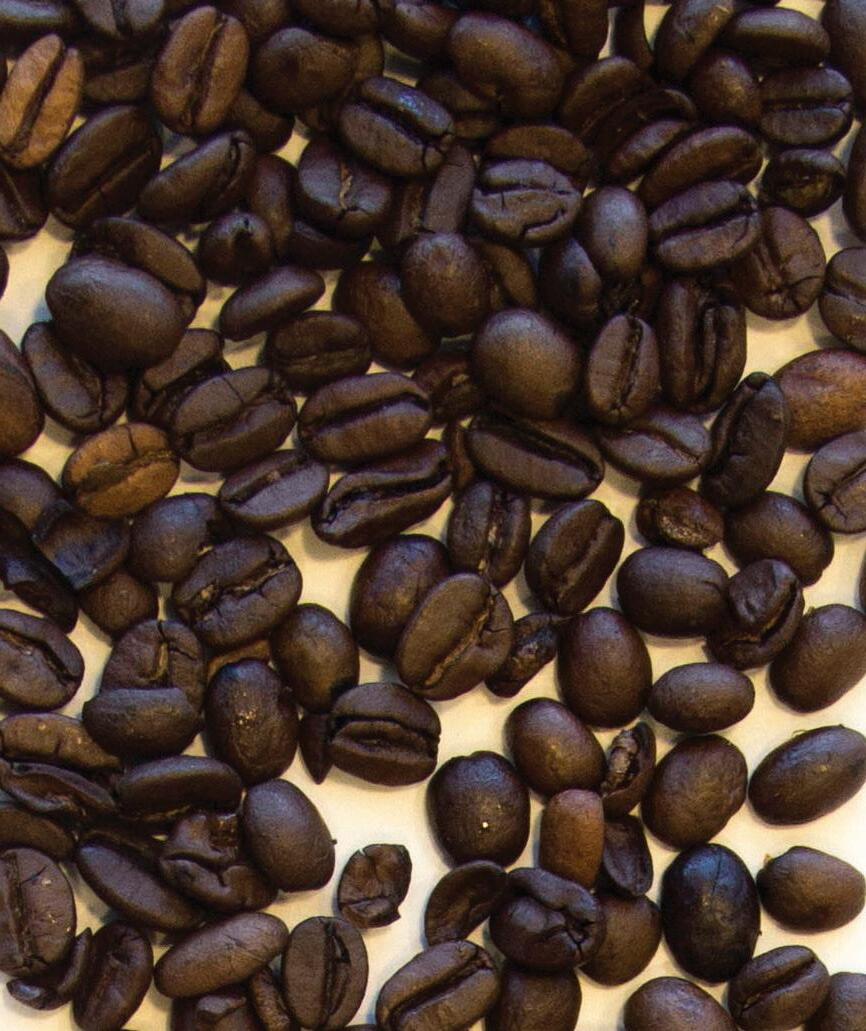
Learn more about the foods we may lose due to climate change
Ball jars provide an easy solution for students who bring their lunches to campus
From Iron Man prosthetics to pieces of cake, check find out the wonders of 3D printing
Find out just how much binge watching 10 episodes of “Grey’s Anatomy” affects your health
Earth’s mightiest heroes in comics and film speculate on the superhero sensation of the summer
There’s more than just one birth control option for males
In his own words, one man explains his love of bicycles
Since Ibrahim Abdullahi first tweeted it out on April 23, 2014, #BringBackOurGirls has been used more than 3.3 million times on Twitter, according to social analytics tool Topsy. The hashtag gained supporters like First Lady Michelle Obama, who surged ahead to pressure the Nigerian government to find the remaining 200 missing schoolgirls who were abducted by Islamist militant group, Boko Haram.
Now, 11 months later, the hashtag has involved only digital chatter. And although the overall goal has yet to be reached, what #BringBackOurGirls and every social media activist has in common is this need and desire to vocalize the injustices and outrage that fuels this country. Like a modern day picket sign, but with the ability to att ract people from around the world. They engage us in a conversation that’s been stifl ed by politicians, media outlets or religious denominations, just to name a few.

Tired of being silenced by bickering Democratic and Republican parties in the past several years, more undocumented immigrants are mobilizing and demanding their stories be heard. Our cover story takes place at the center, the U.S-Mexico border, where you’ll be immersed in Alejandro Galán’s narrative of perseverance and faith across the border (pg. 24).
In “A Little Less Flavor,” (pg. 36) we flip the conversation to one that hits our stomachs by focusing on the foods we may lose due to climate change. Despite the argument “I’m not a scientist,” coined by our representatives, our country can no longer ignore this issue.
And on the web, we balance this theme by discussing the lack of minority representation in the media and how this is a larger discussion on race that needs to be addressed.
In this spring issue of Ball Bearings, you will read thought-provoking stories that at face value might seem unrelated, but upon inspection are parts of a larger theme: Reform.
Though these stories start the conversation, they won’t evoke reform. Phil McGraw, aka Dr. Phil, said it best with, “awareness without action is worthless.” So take these stories, spread the conversation and shout until your voice is heard.
When most people think of the term ‘redesign’, they usually think of a change in colors and font choices. While this is true, a magazine’s style is only one aspect that undergoes a redesign. It is an entire process in which the editorial board takes a step back to think about what is and isn’t working for the publication.
Over the past year, our staff has been working to launch a redesign for Ball Bearings. During this process, we realized that not only did we need a style makeover, but we also desperately needed a content restructure. This prompted us to refer to the entire task as what it really was: a rethink.
The first step to producing a well thought out and polished rethink was to look directly at our content structure. One of the largest concerns we came across was the elimination of long-form feature stories. As a rethink team, we immediately knew these stories needed to be brought back to effectively balance out the magazine as a whole. In addition, we reconstructed the department pages not only to keep the attention of our readers, but to also keep quick pieces from being overworked.
After nailing down this new content structure, we began to bridge the gap between content and design. The design team held several hackathons in which they researched respected magazines that were doing what we wanted Ball Bearings to do. They presented two original style guides for the new look. The final result was a marriage between both styles that allows for cohesive design across department pages as well as art directed, long-form features. By no means is this rethink process over yet. This issue is the first phase in the rethink process. Like most things, nothing is ever perfect or finished. We are using this experience to move forward and evolve into our vision for the future of Ball Bearings.
dastewart@bsu.edu @dom_stew
The Ball Bearings Rethink Team is comprised of former Art Director Ellen Collier, former Design Editor and current Art Director Katy Jamison, graduate and former Assistant Design Editor Aubrey Smith, current Design and asssistant editors Hannah Dominiak and Erika Espinoza and Editor-in-Chief Dominique Stewart.

“The race is not always to the swift, but to those who keep on running,” Dr. David E. Sumner read aloud as he gestured to a framed poster on his office wall. “Just because I’m retiring doesn’t mean I’m stopping. I’ll just be running in a different direction.”
Photos from trips, inspirational quotes and shiny awards covered his office walls. Under the poster he read from hung three plaques. The plaque in the middle read, “2007’s Magazine Educator of the Year” emblazoned in gold. This and other similar awards are his greatest honors because the nominations came from students and colleagues.
One of the reasons for his recognition is his teaching philosophy. Treating his students as equals is what Sumner considers a high priority in the classroom. One student said he offered to take her class to MCL Cafeteria to get to know students better. Another said he came to her sporting event with his wife, Elise, just to support her. As for other students, Sumner said he has
story by brooklyn schumacher
informally counseled students going through depression, and even contributed to their decisions to not commit suicide. Sumner cherished his relationship with his students.
Sumner impacted more than the students in his quarter century at Ball State. He helped foster one of 20 magazine journalism programs in the nation and received national recognition from AEJMC Magazine Division for his contributions. His colleagues applauded his good judgment as a “cornerstone” of the magazine media program. Sumner considered being genuine as one of the top three most important qualities in life. His 25 years have left a lasting impact on Ball State. His humility, wisdom, constant eff ort, contributions to the program and infallible honesty raised the bar for students and faculty alike. Although he will run many miles after his time at Ball State, Sumner will never be forgotten.
ADDITIONAL TABLET CONTENT Listen to students personally thank Dr. David Sumner for his work during the past 25 years by downloading the Ball Bearings app at iTunes or Google Play store.

Stacie Kammerling is a sophomore visual communications major and a designer for Ball Bearings. She spends her time balancing design, performance and excessive listmaking.

Alex Kincaid is a sophomore magazine journalism major with minors in political science and women’s and gender studies. Writing anecdotes is her favorite aspect of storytelling.

Megan Hilaire is a sophomore photojournalism major and has been a photographer for Ball Bearings since Spring 2014. She is also a self-taught guitarist.


EDITOR-IN-CHIEF
Dominique Stewart
PRINT MANAGING EDITOR
Teryn Arm Strong
TABLET MANAGING EDITOR
Holly Demaree
DESIGN EDITOR
Hannah Dominiak
ASSISTANT DESIGN EDITOR
Erika Espinoza
PHOTO EDITOR
Lauren Dahlhauser
ASST. PHOTO EDITOR
Emma Rogers
ASSISTANT EDITORS
Miller Kern
Jessica Pettengill
Ariel Elmore
Meganne Wheeler
Aidan Hall
Lauren Donahue
Alex Kincaid
Erica Somerson
Keagan Beresford
Michele Whitehair
MANAGING EDITOR
Sara Nahrwold
PHOTO EDITOR
Kaytee Lorentzen
ASST. PHOTO EDITOR
Maggie Kentworthy
DESIGN EDITOR
Kailey Sullivan
ASSISTANT DESIGN EDITOR
Lanie Yorgen
ONLINE PRODUCERS
Miranda Carney
Kaitlyn Arford
Samantha Bohannon
Brooklyn Schumacher
Emily Sobecki
Alison Carroll
Jonathan Miksanek
Eric Bouvier
Megan Hilaire
Taylor Irby
Rachel Brammer
Jared Sullivan
Ashton Hampton
Michael Harris
Lauren Chapman
Brice Brenneman
Stacie Kammerling
ART DIRECTOR
Katy Jamison
iDESK EDITOR
Jeremy Ervin
David Sumner
Mary Spillman
@ballbearingsmag
ballbearingsmag.com
Tyson Bird
Kaylie McKee
Elizabeth Peck
Ashley Downing
Lanie Yorgen
Alex White
Sydney Ferrand
Liz Young
Jessica Goldy
Ellen Collier



Chamber Opera Workshop
The Chamber Opera Workshop performances have been rescheduled for today.
Muncie Symphony Orchestra
Join the Muncie Symphony Orchestra in its season finale program, featuring violinist Nathan Meltzer.
Student String Chamber Music Recital
This School of Music event is free and open to the public.

State Softball; Home
Baseball; Home
ference
APRIL 12 • 8 P.M.
The Three Pigs
Tickets are $11 for general admission; Muncie Civic Theatre; Studio Theatre.
APRIL 14 • 7:30 P.M.
Arts Alive Concert Series: Hilary Hahn, violin
The Arts Alive Concert Series presents world-renowned and award-winning musical ensembles and artists.
APRIL 15 • 7:30 P.M.
A Festival of New Plays
Six plays will be created for this festival, featuring work by Ball State playwrights, dramaturgs, actors and directors.
APRIL 18 • 7:30 P.M.
The Color Purple Musical about love on the Mainstage Theatre. Tickets are $16 for adults, $13 for groups, and $11 for students and children; Music Civic Theatre.
APRIL 20 • 7:30 P.M.
Digital Literature Review Launch Gala Second issue of Ball State’s academic journal, Digital Literature Review.
APRIL 25 • 7:30 P.M.
All You Need is Love Wide variety of movement styles and interpretations through The Beatles.
APRIL 15 • 7:30 P.M.
Jazz Ensembles with Guest Artists Sara and Rachel Caswell
Designed to promote jazz within Indiana, the Art of Jazz Series presents internationally renowned artists in concert with the Ball State Jazz Ensembles.
APRIL 17 • 7:30 P.M.
Chamber Opera Workshop
Members of the Student Chamber Opera Workshop present chamber operas. Free and open to the public.
APRIL 18 • 7:30 P.M.
Muncie Symphony Orchestra Folk Festival
The MSO will present two “up and coming” violinists in “On the Brink of Greatness”. Nathan Meltzer, 2014 Young Artist Competition winner, and the winner of the Indianapolis Violin Competition.
APRIL 20 • 5:30 P.M.
Student String Chamber Music Recital Free and open to the public; School of Music.
APRIL 24 • 7:30 P.M.
Wind Ensemble and Symphony Band
Top two band ensembles present a series of concerts each year featuring a wide range of band repertoire.

APRIL 10 • 5:30 P.M.
Guest Artist Recital: Khasma Piano Duo Free and open to the public; School of Music
APRIL 15 • 11 A.M.
Writing Program Speaker Series: Dr. Rozanne Mountford
Dr. Rozanne Mountford, associate professor and Director of Writing, Rhetoric and Digital Media at the University of Kentucky, will lecture on the history of the disciplinary drift between communication and English and how efforts to overcome this divide have impacted the field of rhetoric.

DOMINIQUE STEWART EDITOR-IN-CHIEF
Inspired by Janet Jackson’s early slow jams, Little Dragon’s fourth album breaks from the band’s dance-vibe persona they crafted over the past seven years. Atmospheric beats over lyrics like “Now you’re left with names to forget. Tryin’ to heal from the pain. If only you could rewind it,” ooze out in singer Yukimi Nagano’s icy, trance-like tone in “Cat Rider.” The album is a must if you’re looking for a soulful and electric experimentation of sound. Song essentials: “Klapp Klapp”, “Pretty Girls” and “Cat Rider”.
“YES PLEASE” HBO’S “GIRLS”

HANNAH DOMINIAK PRINT DESIGN EDITOR
Amy Poehler justifies that celebrities are just as normal as anyone in her new book. She says, “I know enough to know I know nothing.” “Yes Please” is a refreshing read that proves Poehler’s wisdom is equal to her wit. She writes about her hatred toward technology, saying, “No one can do it alone, no matter how great the machines are.” Poehler speaks the truth: we can’t do it alone. We need our family and friends to get through our lives. “Do work that you are proud of with your talented friends,” she writes. Yes. Please, do work you’re proud of with people who are talented and with whom you’re proud to work.

TERYN ARMSTRONG PRINT MANAGING EDITOR
This quirky comedy/drama follows four twenty-something girls as they take on New York City and struggle with entering the “real world.” The show’s writer, director and star, Lena Dunham, perfectly depicts the terrifying process of growing up in the midst of a competitive workforce. While it’s often compared to similar shows such as “Sex and the City”, “Girls” captures a more realistic view of the Millennial generation. And with its dry, satirical humor, it reassures us that we’ll find our way “one mistake at a time.”
The editors of Ball Bearings share what to listen to, watch, read, drink and eat.

LAUREN DAHLHAUSER PHOTO
EDITOR
Named after Chicago-native singer-songwriter, guitarist, record producer, audio engineer and music journalist himself, the Steve Albini is a unique coffee beverage served at The Caffeinery in downtown Muncie. Co-Owner Frank Reber interned at Electrical Audio in 2011 and was instructed on how to prepare the studio’s signature drink: “The Fluffy Coffee”. When The Caffeinery opened in March of 2014, the drink became a part the menu to honor Albini. It is a decadent mixture of espresso, whole milk, 100 percent pure maple syrup and cinnamon, just the way Albini designed it.

HOLLY DEMAREE TABLET MANAGING EDITOR
At first glance, it looks like a donut fit for a kid. But if you’re willing to take a trip down memory lane, you will not be disappointed. Squeeze your eyes tight and take a bite. First, you will taste the warm, sweet bread. Then comes the sugary decadence, followed by the crunch of the rainbow Fruity Pebbles sprinkled all around. It can be found at Concannon’s Bakery Café in Muncie, Indiana, and enjoyed outside on the patio. This scrumptious sugar overdose of a treat will not disappoint your childhood taste bud dreams.
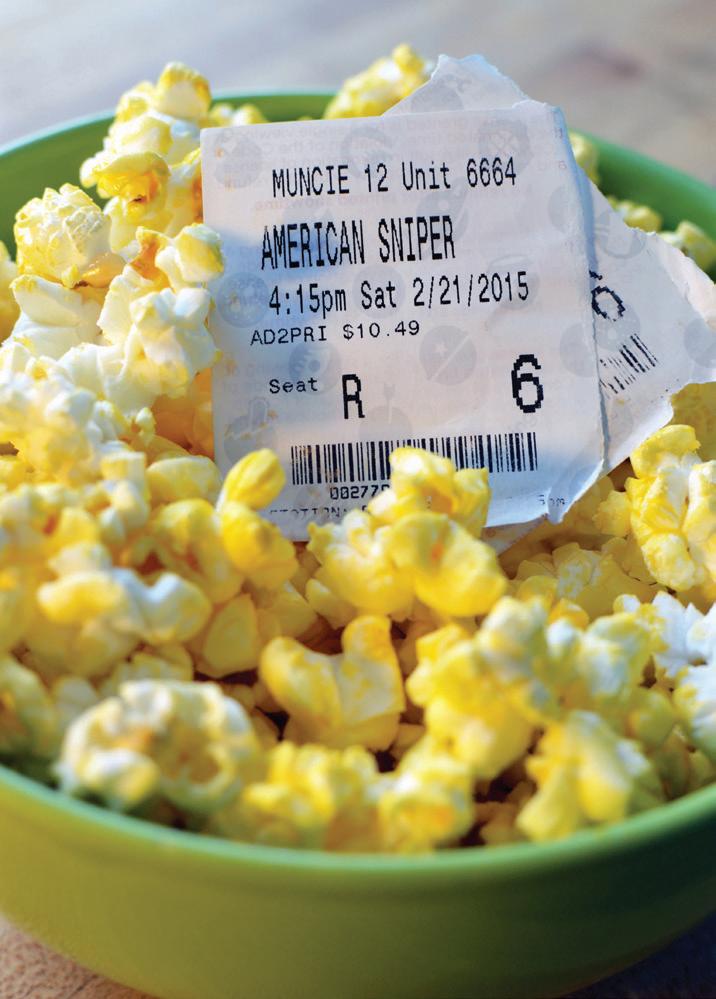
SARA NARHWOLD ONLINE MANAGING EDITOR
“American Sniper” is about Chris Kyle, a U.S. Navy SEAL who served four tours in Iraq. He is considered the most lethal sniper in U.S. history. What makes the film powerful is the intense mental fortitude it takes to be a sniper and the painting of Kyle as a character. Additionally, his returning home physically but still being in Iraq mentally is a part of war that isn’t often shown in popular media, and the film tackled this issue with frank honesty.
I was born with hearing loss, but I wasn’t diagnosed until kindergarten when I received my first hearing aids. I became one of the estimated 38 million people in the U.S. who have significant hearing loss, according to the Center for Hearing and Communication. At first, I was filled with curiosity about this new label that had been placed upon me, but I quickly began to understand the struggle in choosing my own identity.
Nobody likes being called names, even unintentionally. People in other “minority” groups, like the LGBTQIA community or various ethnicities, can be marginalized by a classification, and those who are deaf or hard of hearing are no exception.

shocks me. To clarify, being deaf is a label for those who identify with the Deaf Community. It’s something the Deaf Community takes pride in, as they should. But that identity does not apply to everyone with hearing loss.
by meganne wheeler
One day in 8th grade, my math class had a substitute teacher. At the time, my hearing aids were unable to filter out the noise, and I screamed at the class to “shut up.” My outburst filled the following weeks with gossip. Comments like, “I thought she was deaf” and, “I didn’t know she could hear,” followed me around school, even though my hearings aids were never a secret. I’ve heard comments like these all my life, and the ignorance of the difference between deaf and hard of hearing still
Although deaf and hard of hearing individuals share many similarities, they are still two separate cultures. For example, the Deaf Community uses its own language, American Sign Language. Those with a hearing impairment, like myself, do not identify with the Deaf Community, but it’s an individual decision. Regardless of identification, we are constantly trying to navigate the world of normal hearing levels, while dealing with a deficiency that classifies us in a group that we might not identify with.
It’s unfortunate that the number of people who are deaf or hard of hearing are combined into one statistic. Advocacies like Deaf Awareness Week and Month, while they are great causes to educate on the Deaf Community, play into the misconceptions that being Deaf or hard of hearing are the same thing. The solution is to acknowledge the diff erence and respect it.
A woman is standing in a parking lot with more bags than she can carry, trying to get them to her car. A man sees her and asks her if he can help. Her response can go one of two ways: she can be angry at his assumption that she couldn’t handle it herself, or she can welcome his assistance.
She cannot choose both. If she saw his help as an attack on feminism, she could see his assistance as her inability to do it herself. But what if she drops a bag? Is it anti-gender equality to accept his “chivalrous” act?
The founder and director of the Civility Initiative at John Hopkins University, P.M. Forni, believed that the waning of chivalry could only be a setback for America.

by ariel elmore
According to a poll conducted by The Huffington Post, 20 percent of Americans consider themselves feminists. And while only 8 percent said they consider themselves anti-feminists, 63 percent of Americans said they were neither. Although the statistics reflect that Americans don’t have a preference, many of their answers showed they supported feminist ideas of social, political and economic equality between men and women. Both men and women agreed equally on these areas, which means more Americans are supporting feminist ideals than they realize.
A Harris poll conducted by Washington Times reported that eight out of 10 Americans think that women today are treated with “less chivalry” than in the past. Over half of Americans agree that men and women today are not equal, with only 13 percent believing “the sexes are in harmony.”
“The bottom line is that chivalry was a branch of civility,”
Forni said. “Simply put, civility is a form of kindness.”
Unfortunately for chivalry, the feminist movement has made chivalry look like a tool against gender equality, not a gesture of kindness to everyone.
It all comes down to one word: equality. Would he have still asked to help if she were a man in the same situation?
Nice guys shouldn’t be afraid of helping out the opposite sex, they should just be aware of the setting and context. Chivalry isn’t dead, but there is a time and place for it. Always keep in mind that women will see things differently than men because they have been oppressed as a gender for too long.
“Fractured Narratives” is a multi-platform art series inspired by social and political issues from all over the world and is currently on display in the David Owsley Museum of Art.
This collection of work comes from a diverse group of contemporary artists seeking to explore and comment on some of the world’s problems by examining them in their respective cultural or historical contexts. These artists challenge viewers to develop their own understanding of the meaning of each piece, without directly explaining it to them visually, verbally or otherwise.
For example, one video piece featured in the show is a film titled “Muxima” from the documentary filmmaker Alfredo Jaar. The film’s name comes from the title of an Angolan folk song, which translates directly to the word “heart” in English. Several different recordings of the song are laid over a series of vignettes that explore the country’s history of deep social unrest in the midst of AIDS, post-colonialism and war over the last century. The motion picture contains no spoken words, so these themes are conveyed solely by raw images juxtaposed to the simple, reflective beauty of the music. The viewers are left only with their reaction to what they see.
Alongside the broad range of commentary on life in the rest of the world, “Fractured Narratives” also highlights some domestic issues in North America. One of the exhib-
it’s more interactive features is a wall of chalkboard comic strip panels and dialogue bubbles taken from a World War II era newspaper cartoon. The cartoon revolves around a Puerto Rican parrot called “Carioca.” This character was created in attempt to strengthen the United States’ relationship with Latin America, but in the end only served to reinforce stereotypes about Central and South American culture. The artist who created the installment, Rivane Neuenschwander, removed all of the action from the strip, allowing the audience to “rewrite historical inaccuracies,” in the remaining empty spaces with chalk.
Despite the heavy political and social emphasis throughout the show, activism was not the only goal the curators had in mind. In a talk with Ball State art students and faculty, curator Amy Galpin made a point that, in addition to a serious message, the pieces also have a subtle beauty to them, because she believes that aesthetic is just as important as content when it comes to art.
“Beauty is my sharpest tool,” she said in reference to the show’s design.
And even in the dark nature of most of the show, that subtle beauty is what sets it apart from everything else. It’s meant to create a dialogue with the audience, to establish an idea that might raise a question in the viewers’ mind, or a reaction of some sort that gets them thinking about what it is they’re looking at.
story: keagan beresford


When Jim Kirkwood started playing guitar in 1969, he became curious about what went into making the instruments. He joined an online community of people who sell wood and make instruments. Kirkwood learned about the trade and process from the other members.
Pat Foster was one of those members. Foster played the banjo in a string band but could not afford a nice banjo like the other players had, so he built his own in 1975.
It didn’t end up saving Foster money, but he continued to build banjos and “graduated to guitars 10 years ago.”
For the 38 years he was a professor in the Department of Technology at Ball State, Kirkwood taught undergraduate and graduate elementary education majors how and why using tools and materials in the classroom enhances verbal learning.
Kirkwood completed his first handmade guitar in 2005. The guitar came from a kit that cost him about $400.
“The kit,” Kirkwood said, “really taught me how.”
He then went on to make numerous other guitars by hand without a kit. Each guitar took about a year, Kirkwood said, but the process could be done in four to six months with more consistent work. Foster’s guitars take about 120 hours from start to finish, but the total time “depends on the degree of decoration” of the guitar and is different for everyone.
The guitar-making process, Kirkwood said, “takes a lot of patience, strength and skill.”
STEP 1 The process of making a guitar by hand starts with deciding on the size and style that works best for the user. A pattern must be drawn to guide the selection of materials.
Wood must then be chosen for the top, sides, back, neck, fret board, bracing and head plate. The wood is

then “measured, marked and cut” to size for each part, Kirkwood said.
The wood for the sides of the guitar then needs to be bent. This can be done slowly by hand a bit at a time over a hot pipe or inside a specially made bending form. Bracing strips are then placed on the sides to make them stronger. After that, the sides are glued together and set aside for later.
STEP 2 The top and back are both cut, roughly to shape and “carefully sanded to the proper thickness,” Kirkwood said. A soundhole is cut and a rosette, the decorative part that goes around the sound hole, is added. Bracing is then glued on to both pieces to strengthen them. The top, sides and back are then ready to be glued together. Then, the neck of the guitar gets shaped. The “hard part,” Kirkwood said, is “getting the neck at the right angle,” because “there’s no way to change the angle,” once it has been cut.
STEP 3 Holes must then be cut in the fret board according to precise measurements for each fret. The fret board and head plate are then glued to the neck of the guitar.
For Foster, the next step, the finish, is often the most difficult. The finish takes up “25 percent of the total effort,” Foster said. The problem with this step is that a mistake cannot be covered up. The finish can “visually make or break the guitar.”
The next step is installing the nut and tuning pegs. Holes are cut so that there is an equal distance between strings. Assemble the neck and the body of the guitar, install the tuning mechanisms, add strings and play.
story: michelle whitehair



Statement pieces are bold, unique accessories that demand attention to the person wearing them. They allow women and men to step away from the mundane routine of wearing drab outfits. Here are six statement pieces to spice up your style:
1
Animal print automatically makes an outfit more fun. Cater to your toes’ wild side by dressing them in cheetah spots, zebra stripes, snakeskin or any other crazy creature you can imagine. Animal print goes especially well with black or red clothing.
The denim jacket never seems to go out of style. With so many different styles of denim, the wardrobe options are seemingly infi nite. Throw an acid washed denim jacket over an all black outfi t. The darkness of the black will highlight the light-colored jacket, surely making the outfi t pop.
Channel your inner Elvis by breaking out your blue suede shoes. Suede shoes add an exciting texture to an outfit. Plus, they always come in super fashionable styles.
Add a burst of color to a dark outfit by carrying a brightly colored bag. This statement piece is not only adorable, but functional as well.
5
A chunky necklace can bring some fun to a boring top. Whether the top is plain, patterned, collared, whatever—a bold necklace will add that extra oomph. If necklaces aren’t your thing, invest in a custom band watch. Change up the band to match any outfit.
6
Break the trend of blue jeans and black pants. Instead, dress your legs in vivid color. Avoid wearing a bright top or bright shoes with colored pants. Rather, pair them with a dark shirt and dark or neutral shoes to finish out the look. Let the pants be the main attraction.
story by miller kern
When picturing a thrift store, it’s hard not to think of racks and bins of old, gross and useless junk. Knowing how to shop secondhand for everyday items — not just Halloween costumes — is a skill to consider learning. Whether you are there out of need (50-cent shirts) or want (easy, cheap way to remake your style), the art of thrifting can be mastered by all. Here are some tips for a successful secondhand shopping experience:
• Do: Evaluate your closet prior to shopping. Get rid of clothes you don’t wear anymore, and take note of what gaps need to be filled. Jasmin Shopp, owner of Vintage Shoppe Thrift & Gift in downtown Muncie, said, “Give back; take stuff there. If you’re not wearing it and don’t have a friend you can give it to, take it there. That’s always nice to know you’re giving.”
• Do: Have a general idea of what you’re looking for. Look up the full prices of these items so that you know what you are willing to pay secondhand.
• Do: Wear form-fitting clothes, like leggings and a tank top, and comfortable shoes that can be slipped on and off easily. This makes trying on clothing in the store simple, as some stores don’t have dressing rooms. A hands-free purse, like a small backpack or crossbody bag, is ideal for optimal hunting.
• Do: Set a time limit. As Shopp recommended, “Don’t spend too much time digging through everything. You’ll get tired of it—it wears you out.” So keep in mind what items you went there for and seek those.
• Don’t: Expect to find something specific. The general list you make is more like a set of guidelines, not a grocery list. Having very precise items in mind will prevent you from other great finds, leaving you disappointed.
• Don’t: Assume the size on the tag is accurate. Items may have been stretched out or shrunk by the previous owner. Always try on items before buying or automatically disregarding them.
• Don’t: Allow yourself to be blinded by the low prices. Consider the use of each item and its place in your home. Do you really need 12 grandpa sweaters?
• Don’t: Buy anything without checking the care label. If it’s dry-clean only, you must factor in that cost and effort. Is it worth it?
• Don’t: Assume items can be returned. Always ask an employee about the store’s return policy prior to making any purchases.
story by erica somerson
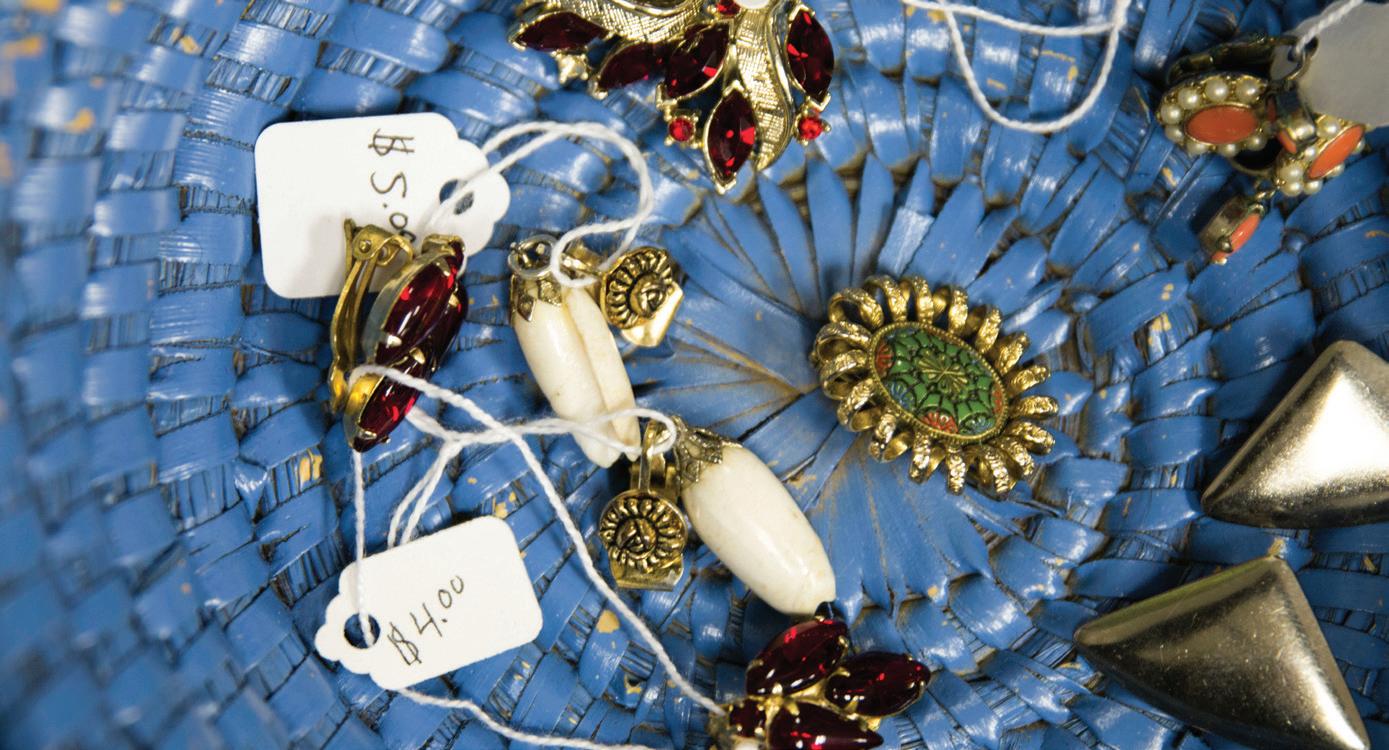

Ball jars are one of the many legacies the Ball Brothers left behind, and now there is a unique use for them. It can be difficult for students to find the time to make meals, but Ball jars provide an easy solution. They can be used to make quick and simple meals to pop in the microwave or pull out of the fridge. Follow these recipes and find joy in a jar.
story by lauren donahue


Ingredients
1 cup flour
1 tablespoon baking powder
2 tablespoons organic sugar
2 tablespoons vegan margarine, melted (or sub. real butter)
3/4 cup nut milk (or sub. dairy milk)
1 cup of blueberries
Process
First, combine the flour, baking powder and sugar in a small bowl, then whisk until combined. Stir in melted margarine and milk.

Set blueberries on the bottom of the jar, and then fill jar halfway with batter. The pancake will rise while cooking. Microwave for about one minute for small jars, or 90 seconds for larger jar. Let cool before topping with more margarine, blueberries and syrup.
(Recipe from masonjarcraftslove)



Ingredients
1/4 cup Nutella
1 1/4 cup milk - fat free or 1% milk (don’t use whole)
1/4 cup sugar
1 packet instant chocolate pudding (1.34 ounce box)
Chocolate wafers (2 cups crushed)
3 tablespoons peanut butter
1 cup butter
Cool Whip (8 ounces for mousse; extra for topping)
Process
First, crush one package of chocolate wafers. Mix 2 cups of the crushed wafers with melted butter, sugar and 2 heaping tablespoon-fuls of peanut butter. Layer the mixture generously at the bottom of the jar and bake at 375 degrees for 10 minutes.
Whisk dry instant chocolate pudding mix with milk for 2 minutes. Add in Nutella and whisk for another 1-2 minutes. Add in Cool Whip (4 ounces) and whisk for another 2-3 minutes. Gently fold in remaining Cool Whip. Pour mixture into jars on top of peanut butter crust; chill for 2-4 hours.
Serve with dollop of Cool Whip; top with crushed chocolate wafer crumbs and Reese’s peanut butter chips.
(Recipe from boyandtherabbit)


Ingredients
1 pound penne pasta noodles
1 pound of ricotta
1 egg
1 hand full of Parmesan cheese
½ teaspoon of kosher salt
2 cups of Mozzarella cheese
3 cups of marinara sauce
12 (8 oz.) wide-mouth Ball Jars
Process
Boil noodles according to package directions. Drain and add them back to the pot. Mix in 2 cups of sauce. In a bowl, mix together ricotta, egg, Parmesan cheese, salt and Mozzarella. Fold the cheese mixture gently into the noodles. Place in greased jars and top with the remaining sauce, and sprinkle with more Parmesan cheese. Bake the jars at 350 degrees for 35 minutes.
(Recipe from bigredkitchen)













At Cardinal Communications, innovation and quality are the foundations of our philosophy.

We have operated as a student-run creative communications agency since 1976. Today, the agency stands among the most accomplished and successful student-run agencies in the country and is one of few designated a National Affiliation Program with the Public Relations Student Society of America.
Together, we form an unparalleled agency that is united by a passion for producing exceptional work for outstanding clients.
Discover how our story can connect with yours by visiting us online at www.cardinalcomm.org.





We’ll spend a weekend with roommates watching “Scandal” a few hours in between classes, catching up on “Orange Is the New Black” or end a night full of homework with some “House of Cards”. We all have a general idea of what the term “binge watching” means, but what is it really? Most dictionaries say it’s watching multiple episodes in a row. But according to a survey organized by Netflix, Harris Interactive concluded that binge watching means consuming “Two to six episodes of the same series in one sitting.” In another study, the University of Texas described it as watching “Two to three episodes in one sitting.” Regardless of the complexities of this definition debate, how does binge watching play a role in our lives?
WHO’S WATCHING?
“Americans between [the ages of] 18 and 39 are more likely to watch television on demand compared to other age groups,” a Harris Interactive poll said. Americans with children are also more likely to participate in binge watching.
HOW DOES IT MAKE YOU FEEL?
Figuring out the emotional impact of binge watching is difficult because of the little research that’s available, but we do know people who feel more depressed tend to watch more often. Researchers at University of Texas found that binge watching was linked to depression, loneliness and a lack of self-control—the activity didn’t cause those behaviors, but rather contributed to
story by kaitlyn arford
them. Watching everything at once could also make the experience less enjoyable. In an interview with NBC News, Columbia professor John Black said the process of binge watching was similar to taking drugs. The more you take in, the more “you kind of get dull to it and you’re not really appreciating the show,” Black said.
Maybe. Binge watching can cross the line to addictive behavior.
“I can watch until I fall asleep if I have nothing to do,” says sophomore criminal justice and psychology major Channon Williams.
Binge watching can also make life more stressful if
it’s not balanced with getting work done.
“Once I start watching I don’t really stop, so if I have homework to do I usually put [watching TV] off,” says junior speech pathology major Katie Simmons. “Usually I won’t binge watch unless it’s the weekend and I know I don’t have anything going on, or I’ll make sure I have my work done before I start a show.”
People always choose their favorites to watch first, according to the Harris Interactive poll. The other top factors in deciding what to watch include wanting to know what happens next, sticking to time constraints and not wanting to risk spoilers
and mood. Shows are created to intrigue and compel attention through plots and dialogue. A Slate opinion piece argued that binge watching blurs together individual storylines, infringes on the feeling of suspense and alters the understanding of the show’s timeline.
The more episodes of any TV show enjoyed, the higher the chances of gaining weight. According to Harvard School of Public Health, watching too much TV can cause weight gain, Type 2 diabetes and heart disease. Sitting for long periods of time have also been shown to slow down metabolism. And according to researchers, regular exercise may not always fix the damage.
Things tend to break, and when they do, it is usually when you are trying to use them. Instead of searching for the part and then buying it, try printing another one or anything else that may be broken.
The process of 3D printing is called additive manufacturing. The printer uses software that captures 2D designs of an object and turns it into a 3D version. The type of material used to make a 3D item depends on what is being printed. The printer adds material to the object layer by layer. It is similar to the process of stalagmites and stalactites found in caves.
3D-printing in the industry and at home is complicated, and it is now even possible to recreate human organs or body parts. In April 2013, Dr. Paolo Macchiarini was able to print a trachea, or windpipe, for 2-year-old Hannah Warren. She was born without one and spent her entire life in the intensive care unit. By using her bone marrow, stem cells and plastic fibers, Macchiarini gave her a new life.
“One of the best aspects of 3D printing is rapid prototyping,” Andrew Arthur, Design Specialist for the Digital Corps said. “The big deal with 3D printing is you can design something that is rough, print it out, test it and if it works, awesome, and if it doesn’t then you can just keep going through this prototyping process. It makes any special designer’s job easier because you have the ability for trial and error.”
In addition to providing Iron Men prosthetics to kids in need, 3D printers can also produce other objects that might not immediately come to mind.
“We just modeled an 1891 Baltimore thru truss bridge and it was originally pin constructed,” Carol Street, Archivist for Architectural Records at the drawings and documents archive said. “It was constructed with parts that are put together like a puzzle and then hot riveted. So that process enabled us to create it like they did in the factory, but on a 3D printer. So the students could put the bridge together while learning to read construction drawings in a fun way.”
In addition to medical innovations, the 3D printer is also making it easier to provide experts with the ability to test and tweak real objects until they reach their desired result. Plastic is the most common material used for 3D printing, but the printer can utilize much more. In fact, Harvard University was able to print synthetic sharkskin and intricately designed food.
At Ball State, the College of Architecture and Planning utilizes 3D printing to help students design.
As a result, the 3D printing process has decreased construction time and waste. The materials used to print and create buildings are recycled, which decreases the need for quarried stone and lumber. However, the creation of the products via 3D printing causes a rise in demand for plastic. ABS and PLA fi laments are two common types of plastics used to print products. When ABS is heated and melted, the printed object emits up to 200 billion particles per minute. According to research conducted by the Illinois Institute of Technology, particles can sett le in the lungs or the bloodstream posing potential health risks, especially for those with asthma. ABS filaments are not BPA-free; but printers use them to create plates and utensils. BPA is an industrial chemical that has been used to make certain plastics and resins since the 1960s and contains epoxy resins. BPA is found in many plastic containers used for food and water, but the Food and Drug Administration said BPA in food at low levels is safe. Exposure to BPA is a concern because of possible health effects it may have on the brain, behavior and prostate gland of fetuses, infants and children. The future of 3D printing has both positive and negative outcomes. What will take shape depends on the next idea and material used to print it.
story by holly demaree
ADDITIONAL TABLET CONTENT Watch the beginnings of the Eiffel Tower being created by BSU’s 3D printer by downloading the tablet app at the iTunes store and Google Play.






















A new group of heroes took the stage in September of 1963. Three years after DC Comics launched their own superhero team with The Justice League, Iron Man, Ant-Man, Wasp, Thor and Hulk teamed together to fight Earth’s mightiest threats. For decades, these heroes of the painted page joined together. Then in 2012, by the hand of Joss Whedon film and TV, they landed the big-screen treatment and went from book to reel.









ADDITIONAL TABLET CONTENT Interact with our comic book infographic by downloading our app at iTunes or Google Play store.











Who is Ant-Man? Without Ant-Man, there would be no Avengers. Dr. Hank Pym was an accomplished scientist who, after discovering the amazing Pym, decided to harness their power and fight the rampant evil surrounding the world. He discovered that with the power of the particles, he could shrink his body to the size of an ant, or expand his body to a hundred times its original size. He also created a helmet that allowed him to communicate with insects. But no matter how much he grew, the wave of evil was much larger, and Dr. Pym needed a team to stop it.


He also created a helmet that allowed him to communicate with insects. But no matter how much he grew, the wave of evil was much larger, and Dr. Pym needed a team to stop it.

The rest became history as the iconic champions of justice teamed up to avenge the everyday man. Faced with countless threats, the heroes reached the top, but no matter how many villains they faced, there never seemed to be an end. Dr. Pym, not one to be deterred, decided to create a being that could watch the world when the Avengers weren’t around— a guardian of the downtrodden.










He decided to build a mechanical being that would protect humankind. Pym named this mechanical messiah Ultron. And for a time, he guarded the humans willingly. But, as Ultron looked out among the humans each day, he saw their evil potential. As a result, he turned against his creator and forged his own path. This summer, the cinematic heroes face the mechanical menace for the fi rst time on the big screen.
However, these Avengers of the big screen will be lacking an ant-sized ally. Rumor has it that Ant-Man will hold a minor role in the upcoming Age of Ultron film, but will not fulfill the original character arc. Therefore, we’re left asking: How will the mechanical menace come into being? Rouge Iron Man suit courtesy of The Living armor storyline? We’ve already seen in trailers that the Hulk Buster suit will be making its big screen debut, so that’s a possibility. Another prediction could be that he materializes like a freak force of nature.

He could even be from space and powered by an Infinity Stone—this would Segway the marvel universe into the third series of movies and prepare us for the Infinity Gauntlet arc.



Perhaps Tony Stark will have built him to be the guardian Dr. Hank Pym always wanted him to be. But with the exclusion of Ant-Man and the possible inclusion of Spider-Man, fans are left wondering just what awaits us in this new mega force of a film. ?
story by aidan hall















A story of perseverance and hope across borderlines
















Alejandro Galán pulled back the waxy peel of an orange as he rested beneath an orange tree in the predawn darkness of July 25, 2005. He had traveled 1,857 miles from Veracruz, Mexico, to Calexico, California, through the desert over the course of three weeks. The orange was the first thing he had eaten in three days, and the sweetness of the citrus soothed his aching stomach.
Galán, his mother Isbel Ruiz, cousin Rocio “Sunki,” family friend Raul and 18 other women and children scattered themselves beneath the drooping branches of the grove near Calexico.
The blended group of Mexicans and Salvadorians had just crossed the U.S.-Mexico border. Their “coyote,” a human smuggler, ditched them an hour earlier to avoid being caught by the immigration officers who were not far behind. They had sat in silence for three hours, waiting for their opportunity to resurface.
Galán, a bushy haired 10-year-old, ate as many oranges as he could before falling asleep in his mother’s lap to the sound of helicopter blades whipping the air nearby.
This was Galán’s third time crossing the border. He and a pregnant Isbel had spent the past year taking care of Isbel’s ailing mother in Veracruz, who would pass away just a few months after they left.
A smooth sensation caressed Galán’s face, waking him up. He opened his eyes to the heavy panting of a large dog and an officer in a deep green uniform with a yellow patch that read “U.S. Border Patrol” staring at him.
“Are you OK? Is anything hurt? Did they abuse you?” the officer asked, referring to the coyote. To border patrol, coyotes were criminals who had a reputation for raping, abusing and abandoning their clients.
With the exception of being tired, hungry and dirty, Galán was fine.
“Group of 18 found, one kid. Going to be processed and taken to the detention center. Coyote was not found,” the officer said into his walkie-talkie as radio static and the shrieking of sirens filled the air. Officers scoured the area for others, overhead and by foot.
Every 20 years Every 2 years



“IF YOU GIVE ME THIS CHANCE, I WILL NOT TAKE IT FOR GRANTED. I WILL VALUE IT.” - ISBEL RUIZ
“Where’s your location? Do you need backup?” The radio answered.
Isbel was shaken. She was responsible for the lives of three children, and her 18-month-old son, Ivan, was being smuggled with another immigrant family. Isbel had given birth to Ivan eight months before their attempt to return to the states.
Ivan’s birth cost the family an additional $3,000 dollars—a coyote’s rates could go up to $10,000 per person—but also meant that Ivan would be separated from them while they crossed. He had to be brought to the states with a coyote who specialized in smuggling younger children.
Defeated, Isbel prayed.
“God, if you let me in this time, I will not leave this country until I have the proper way of coming back legally,” Isbel said to herself. “If you give me this chance, I will not take it for granted. I will value it.”
The officer ushered the Galáns and the rest of their group into a white van, and transported them to El Centro Service Processing Center in El Centro, California, to be processed and later deported.
When Galán and his group arrived to the center at 4 p.m., they were escorted into a large room filled with other captured immigrants. Two hundred would-be immigrants
from all over Central America, whose ages ranged from one month to 60 years old, cluttered the detention center.
“You see people with their shirts covered in blood. Messy hair. People who don’t even look like people. People, who in order to protect and camouflage themselves, covered their whole entire body in mud,” Galán said, remembering the windowless, concrete prison.
The smell of sweat, blood and dirt radiated from their unkempt bodies, emitting a wet dog and rotten egg smell. The stench lingered like a thin film above them, temporarily leaving when a new set of detainees entered the building.
The newcomers roamed the center yelling for family members they hoped would be there. Pregnant women cried in fear that they might have miscarried, while abandoned children wandered around.
Isbel’s mind kept trailing off to Ivan, who would have made it to the immigration house in California, a place where coyotes take their clients upon entering the states. Since detainees did not have phone access, Isbel had no way to inform her husband, Gaudencio, or the coyote who had Ivan.
So she sat and prayed in silence.
“Espero que mi hijo está bien,” she prayed. (“I hope my child is OK”).

Overwhelmed with grief, Isbel hid her face from the boys as she cried. She needed to be strong for them. Between her bouts of crying and praying, she would comfort the boys with a smile.
Galán created backstories for the people in the room to help pass the time.
The girls crying in the corner might have lost their dolls while trekking through the desert. That man with the missing left leg was probably returning to the states to be reunited with his family, just like Galán.
“I remember thinking, ‘Why?’” Galán said. “Why do you put yourself through all of this? Is it really worth it in the end?”
Galán was four when they first immigrated to the states in 1999. They moved in with his cousin Valentin Ruiz from his mother’s side in Morristown, Tennessee. Isbel worked in a meat factory then, plucking and grinding chicken for $5.25 per hour for 40 hours a week.
If the Galán family had immigrated two decades earlier, they would have fallen under the protection of the Immigration Reform and Control Act, which granted amnesty to undocumented immigrants who had been living in the United States since 1982 and penalized employers who knowingly hired undocumented workers.
The law underestimated the country’s demand for immigrant labor, which Michael Snodgrass, associate professor of Latin American History at Indiana University-Purdue University Indianapolis (IUPUI), said was the major motivation for immigrants, who were often enlisted by recruiters.
“Immigrants are willing to do the low level jobs that Americans don’t want to do,” Snodgrass said. “The first Mexicans that came to the United States came here when large companies like the railroads and the mines recruited men to come north to the United States.”
The Galáns had no intention of staying in the states. Their plan was to save enough money to buy land in Veracruz, but upon returning to Mexico, Isbel realized that a day’s pay in the U.S. sustained her family a week in Mexico, while one week’s pay in Mexico could not support them one day. This fueled their second illegal crossing over the border. Obtaining permanent residency is a tedious process that can exceed the length of a person’s life span. Though according to the Department of Homeland Security, each country gets the same quota of visas allocated for that fiscal year— a minimum of 226,000 family-based visas per year and a minimum of 140,000 employment-based visas per year—some countries “oversubscribe” to that countries’ quota. When this occurs, individuals are backlogged.


“



My dad] and my mom had this romance—I guess they sent letters back and forth [across the border] and eventually he proposed to her.
I was born in Aguascalientes, Mexico, and not soon after, my mom and I went to the States, but we entered illegally.
We still have cousins every now and then who want to come here to work and they have to wait a really long process. With this Obama [immigration plan] it’s a little easier, but they still have to face that fear of being deported.
We’ve had a cousin who’s been sent back, I think, two or three times. He’s in Mexico right now, and he’s happy there.
We would get calls in the middle of the night saying, ‘Hey we’re going back to Mexico because we just don’t feel safe.’
It creates a scare in the community. I remember being in high school, and even in middle school, where people say, ‘The migra, or migracion, is in town. They’re checking people, pulling people over even if they look slightly Hispanic.’
[Immigrants] want to raise their children [in the U.S.]—that’s why my parents came here. They weren’t sure if they could sustain us because there weren’t a lot of jobs.
I am going to be one of the first relatives to get an education — to graduate from a university. I hope to give back and teach English through a program. I do still feel that connection.”
interview: samantha bohannon


This is what John Broyles, an immigration attorney at Broyles Kight & Ricafort, P.C, said drives illegal immigration.
“There are Mexican family-based immigration categories where the wait exceeds 100 years,” Broyles said. “No one is going to wait 100 years for a green card. The legal option doesn’t work, [so] people start choosing illegal options.”
Those who opt for the illegal route are met with anti-immigrant/immigration sentiments that are rooted in the ideology that illegal immigration has contributed to the financial disparities of average Americans.
“We live in a time and with an economy that doesn’t work well with some people and it’s easy to make immigrants the target of that,” Nancy Robertson, associate professor of history at IUPUI, said, “as opposed to an economic system that doesn’t advantage average people.”
The Center for American Progress reported in 2013 that the legalization of the current 11 million undocumented immigrants would result in a U.S. economy boost for over 10 years; specifically $832 billion would be added to the country’s cumulative GDP.
“People have this notion of pulling up the ladder once they’re here so others can’t use it,” Robertson said.
At 4 p.m. that day, the immigration officers loaded Galán, his family and other would-be immigrants onto a white bus back to Mexicali. They were dropped off near a town center that provided food, transportation and phone services. In just a few hours, a new smuggler, sent by their original coyote, met to help them finish their crossing.
This time, the group would be crossing the Rio Tijuana, a drainage canal sandwiched between Tijuana and California. Crossing what locals called, “El Bordo,” would be the easiest part. The challenge would be to get a group of 18 into a five-person van without catching the attention of the evening patrol officers.
“If you get in the van you’re good,” the new coyote said before sending them off. “If you don’t, you’re left.”
The man at the detention center had lost his leg that way. He had been running to catch his van, when he tripped and was run over by a car. Border patrol would find him later that day.
More than 6,000 immigrants died crossing the southern border since 1998, according to the Department of Homeland Security (DHS). They are scattered along the border in unmarked, mass graves still waiting to be identified.
The following day, Galán stood along the ditch and counted the seconds between each patrol truck that drove by. Finally, a van similar to the patrol trucks pulled up.
In 2014, the party supported immigration reform, which focused on legal immigration and “addressed the undocumented population issue without amnesty.” They also hope to “foster a healthy environment where foreign nationals can successfully invest and establish themselves in our Hoosier Community.”
“We recognize that for most of those seeking entry into this country, the lack of respect for the rule of law in their homelands has meant economic exploitation and political oppression by corrupt elites. In this country, the rule of law guarantees equal treatment to every individual, including more than one million immigrants to whom we grant permanent residence every year. That is why we oppose any form of amnesty for those who, by intentionally violating the law, disadvantage those who have obeyed it. Granting amnesty only rewards and encourages more law breaking. We support the mandatory use of the Systematic Alien Verification for Entitlements (S.A.V.E.) program…”
Republicans in Congress renewed their fight against amnesty by attempting to block annual funding for the DHS. In their view, President Obama’s executive action regarding DHS enforcement priorities amount to amnesty and executive overreach. The funding passed the house on March 3, 2015. The split ended at 257-167. The vote highlighted conflict between party establishment and opponents of the bill. House Speaker John Boehner allowed a bill void of amnesty riders to reach the floor and voted to pass it along with 74 other Republicans.
With 30 seconds before another patrol truck would come, Galán clasped Isbel’s hand.
“Hold on to mom and don’t let go until I get into the van,” Galán thought.
The group scaled the side of the canal wall and dashed toward the van. Before Galán could make a start for the opening, his cousin Sunki grabbed him by the waist and flung him inside. The van was hollow, allowing Galán to slide in upon impact.
One-by-one, members piled themselves into the van. They stacked themselves on each other to ensure that everyone could fit, within their 30-second window.
With just seconds to spare, Galán’s heart sank when the sound of familiar sirens started wailing in the distance. “Not again,” Galán thought.
A beige cloud of dust surrounded the van as their coyote slammed on the accelerator and drove into the desert.
“Jesús, nos ayude,” a few women prayed. (“Jesus, help us!”)
Galán rested his head on Isbel, in anticipation of their inevitable capture.
After being chased by border patrol through the desert for 30 minutes, the coyote stepped out of the white van with a broom in hand and started erasing their tire marks that engraved the sand. He had ditched patrol, and was arranging for their group to be picked up and driven to the immigration house in Los Angles, a three-hour drive that would put an end to their journey.
“ THE LEGAL OPTION DOESN’T WORK, [SO] PEOPLE START CHOOSING ILLEGAL OPTIONS.”
-JOHN BROYLES
They pulled up to the coyotes’ one-story unfurnished rental. Inside, the walls were lined with mattresses for the 60 people that would reside there until they paid off the coyotes.
“Where’s my kid?” Isbel said when she entered the house.
She had not seen Ivan in four days and needed confirmation that he was not being held for ransom.
An elderly woman brought Ivan into the room. He grinned toothlessly as the woman passed him into Isbel’s arms. God had listened to her prayers.
The Galáns stayed at the house for a week before boarding a plane back to Indianapolis, where they would be reunited with Gaudencio. Even though the Galáns would
1965
finally be reunited, they “lived in the shadows” with the other undocumented immigrants residing in the U.S.
Between 2005, the year of the Galáns’ final emigration, and 2013, the U.S. deported more than 3 million undocumented immigrants according to the DHS. The increase of deportations in the last six years has prompted Janet Murguía, the president of National Council of La Raza, to label President Barack Obama the “deporter-in-chief.”
This crack down on immigration enforcement has largely been the result of the September 11 terrorist attacks. In the 2004 9/11 Commission Report, the National Commission on Terrorist Attacks Upon the United States wrote, “the challenge for national security in an age of terrorism is to prevent the very few people who may pose overwhelming risks from entering or remaining in the United States undetected.”
CROSSING THE BORDER WAS ONCE LIKE “WALKING ACROSS DRIVEWAY.” -UNDOCUMENTED
In an attempt to combat years of leniency and ease domestic fears, John Mueller, a political scientist at Ohio State University, and Mark Stewart, civil engineer at the University of Newcastle, noted that as of 2011, $360 billion had been given to strengthen homeland security since 2001.
The renewed hyper-vigilance towards immigration is what attorney Broyles said was the U.S.’s way of recouping from the backlash of leaving the “door open” years prior, particularly at the U.S.-Mexico border.
“We shouldn’t be shocked by the huge numbers of people who are here illegally because immigration policy had been kind of ‘Eh. So what, come,’ by not having strict enforcement,” Broyles said. “A guy once came to my conference room [who] had been crossing the border illegally for over 30 years.”
The man told Broyles that crossing the border was once like “walking across the driveway,” but in the past 14 years has become more like “trying to get across Interstate 465 during rush hour.”
This attention towards illegal immigration has prompted a sort of call and response between the Latino demographic and President Obama. About 5 million immigrants who live in the U.S. illegally will be shielded despite recent bipartisan attempts to defund the homeland security-funding bill.
The president’s executive action will also expand pre-existing programs like Deferred Action for Child -
Under a section titled “Including Every Hoosier – Period” in the 2014 Indiana Democratic Party Platform, the party declared commitment to fighting racial profiling, voter disenfranchisement and the Defense of Marriage Act, but did not directly mention illegal immigration nor amnesty.
“Democrats know there is a broad consensus to repair that system and strengthen our economy, and that the country urgently needs comprehensive immigration reform that brings undocumented immigrants out of the shadows and requires them to get right with the law, learn English and pay taxes in order to get on a path to earn citizenship. We need an immigration reform that creates a system for allocating visas that meets our economic needs, keeps families together and enforces the law.”
Announced in November 2014, President Obama’s executive action on immigration aimed to address immigration plans outlined the year he ran for office. The action instructed the Department of Homeland Security, an executive entity that reports to Obama, to expand Deferred Action for Childhood Arrivals (DACA) and for the parents of those children, Deferred Action For Parents of Americans and Lawful Permanent Residents (DAPA). The DHS was also ordered to implement a new enforcement and removal policy, which prioritizes national security threats and illegal immigrants with criminal records for deportation.
hood Arrivals of 2012 that provides work permits and exemptions from deportation to what the U.S. Citizenship and Immigration Services said is 580,946 undocumented immigrant youths as of 2014.
“They’re choosing, to some degree, life or death,” said Myrna García, visiting assistant professor of American and Latino studies at Indiana University. “The biggest problem that I see is that we tend to pin the problem on the person themselves, but we’re not looking at how and the circumstances of why people are coming.”
At the end of his first year at Ball State University in 2013, eight years after his final emigration, Galán wrote a tell-all bio of his struggle with being undocumented in America for his GoFundMe page.
Though he knew this was his only hope for paying for college, Galán struggled publishing the bio.
Drawing attention from the local government was not his concern, since he was protected under DACA. He was worried about how his friends, colleagues and mentors would view him knowing the details of his res-
“ BUT I LIVED HERE ALL MY LIFE, SO I CONSIDER MYSELF
idency. Galán had never purposely concealed his status, but publicly opening up for the first time scared him.
“I think what’s happening now, is you have the [DACA] students trying to demonstrate that ‘look we’re students, we will do military participation, we can be worthy citizens to be included,’ so they’re making stories for themselves for inclusion,” García said. “They’re vocalizing their stories and mobilizing that they need to be included.”
García said these individuals are not settling for just temporary relief, they are fighting to get their stories heard.
After weeks of hesitation, Galán came to the realization that he should not be ashamed of his Mexican roots or how he came to this country. With this newfound confidence, he uploaded the page and shared it on every social media account he owned, receiving a welcoming response.
“I’ve accepted the fact that I’m illegal. I didn’t come here legally,” Galán said. “But I lived here all my life, so I consider myself an American.”
story by dominique stewart





My father was deported about eight years ago. He’s still in Mexico.
I actually hadn’t talked to him until about my sophomore year of college, which was about three years ago. It was the fi rst time I got to talk to him since he had been arrested—I wasn’t expecting it. I was happy and nervous at the same time, but overall it felt great to be able to talk to him again.
mother really wanted to stay in Mexico, but he finally convinced my mom that we would all be better off coming to the States and have a better life.
When I was in the middle of high school, I was always playing football and wrestling. A lot of the time when I would see other guys have their dads at the wrestling matches and football games, I would always look to someone else like my mom or my coach, instead of having my dad to look to.

It was my dad that kind of pushed us to come [to the U.S.] He thought it would be better. My dad was already here, working on a chicken farm in Indiana. My

It’s been hard to talk. Communication’s not really great, but there is some there. I would love to go back and forth between Mexico and the United States. I plan to be able to go down to Mexico and pay him a visit.”







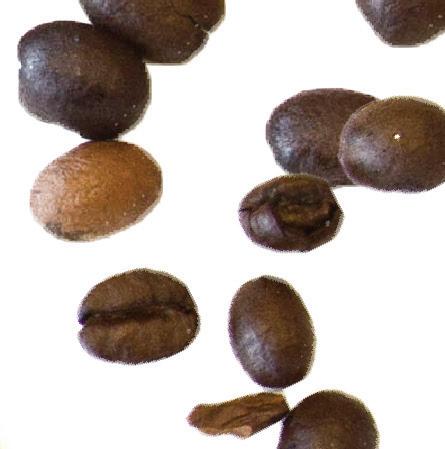


















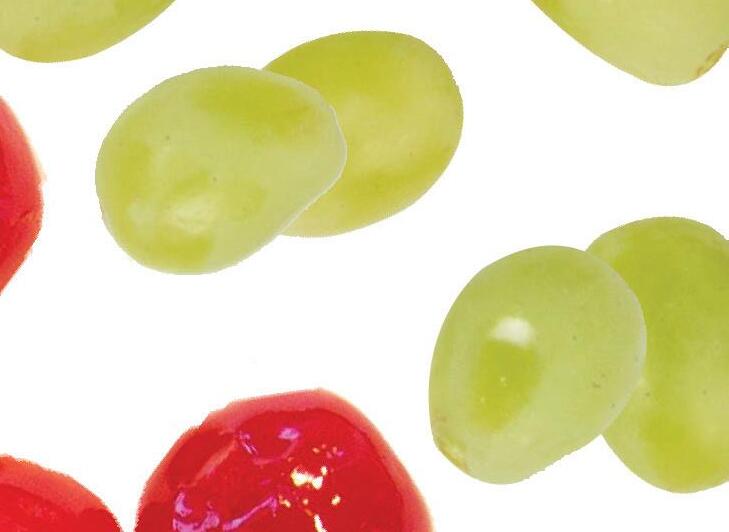























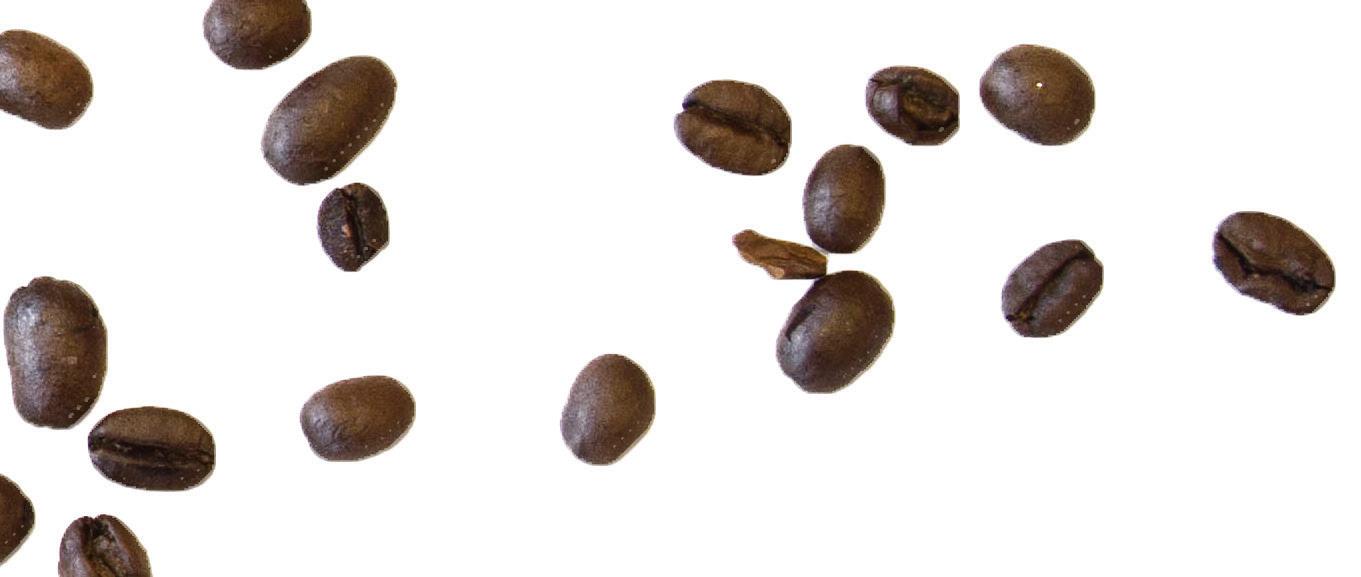











flavor a little less



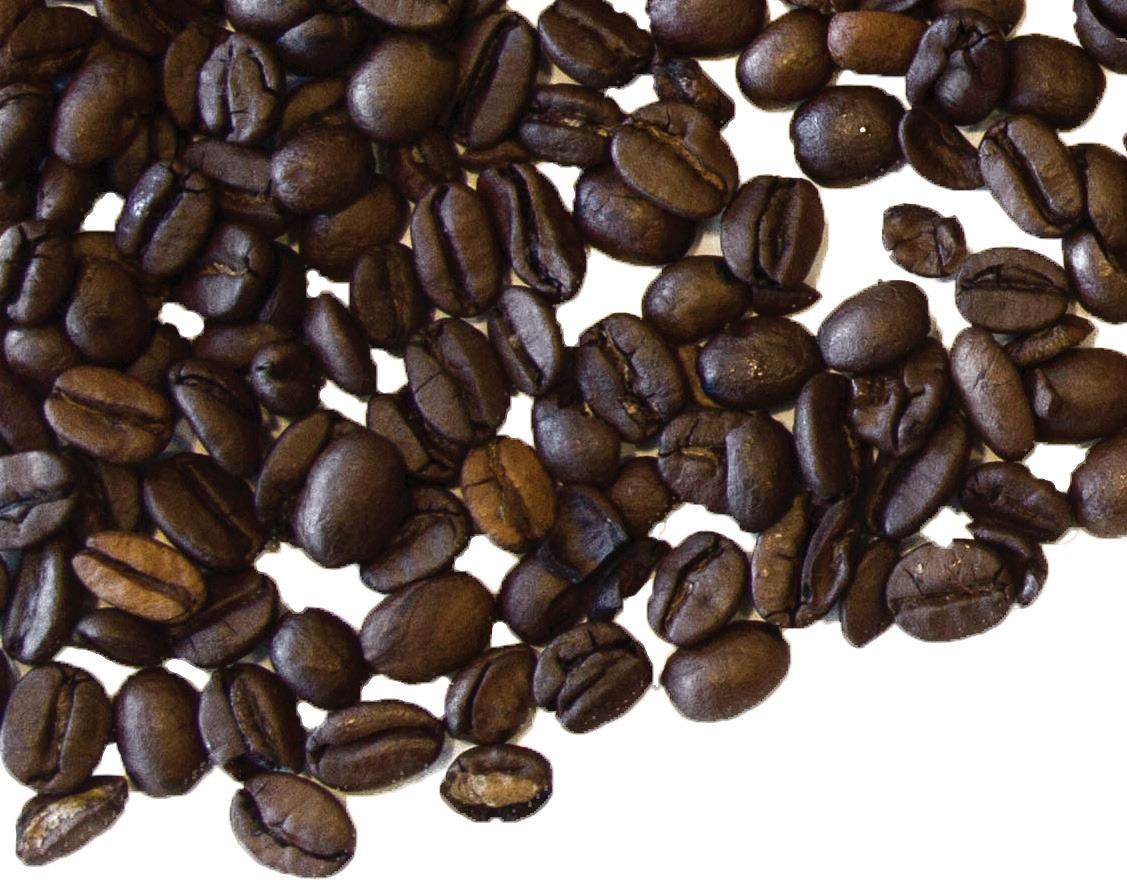
Having already left its mark across all continents and oceans, climate change has hit us where it hurts the most: our stomachs, hitting closer to home than the melting ice caps, stranded polar bears and greenhouse gases scientists proclaimed back in 1988.
Treats like Hershey’s bars, Mocha Frappuccinos and boxed wine are not crucial to living, but as the climate continues to change, global warming will cause foods like these to become less plentiful over the next few decades.
Petra Zimmerman, a Ball State geography professor who specializes in climate change, said that while many people do not like to talk about the changes our climate is going through, it must be addressed.
“The climate is changing and there is no debate anymore as to whether [or not] we’re getting warm-



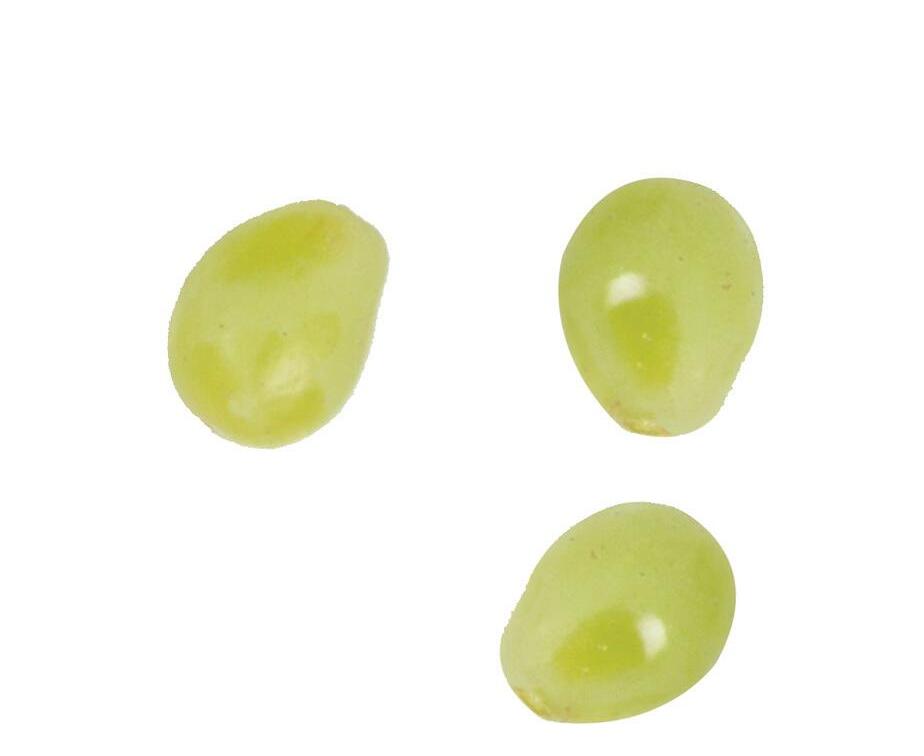
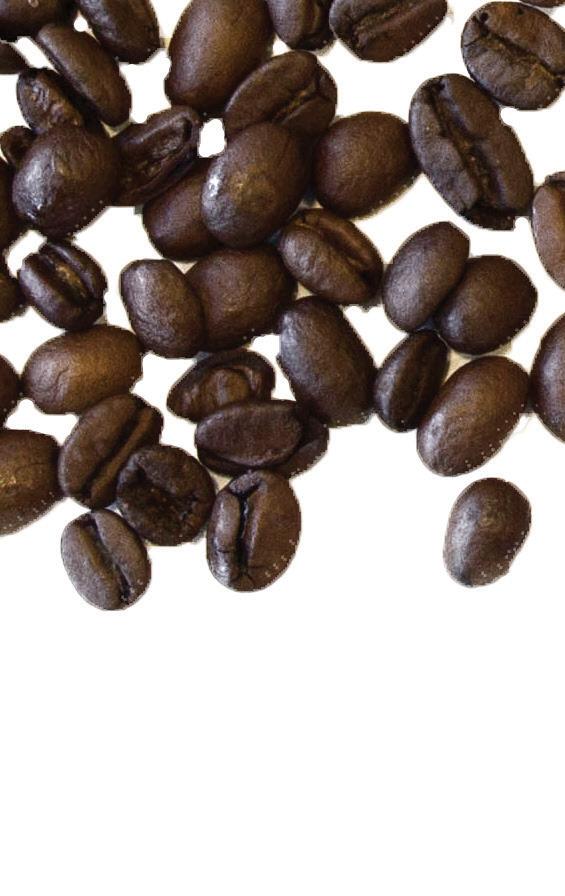
er,” Zimmerman said. “We are getting warmer”
The global temperature has increased four to seven degrees Celsius over the past 5,000 years. This slight increase has lead to extended droughts, which create lower water levels.
Currently, water scarcity aff ects 700 million people in 43 countries. Due to this preexisting issue that number could increase to half of the world’s population by 2030, according to the United Nations Department of Economic and Social Aff airs in 2014.
Water scarcity is a natural and human-made problem that occurs when insuffi cient water resources are available for drinkable water, domestic usage and agriculture.
Zimmerman said consumers could expect a shift from water hungry plants, like grain, to plants that need less water.







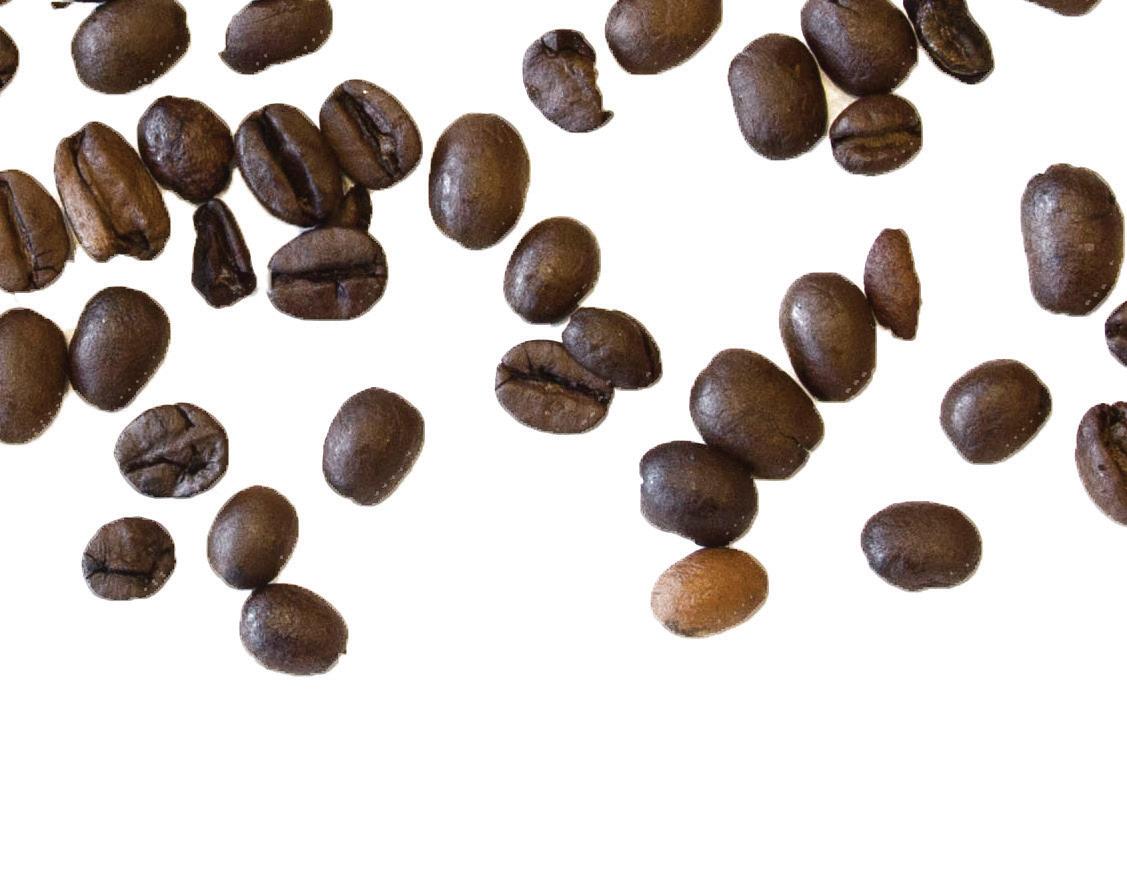
Producing one ton of grain requires 1,000 tons of water, according to the Population Institute. Because of this, many countries have cut down on the amount of grain they grow. With rising temperatures and decreasing rainfall comes rising prices. Lester Brown, president of the Earth Policy Institute, said in Slate that the price of grain would be most telling in predicting political instability. Higher food prices will lead to even greater food insecurity in struggling nations where riots have already broken out because of food shortages. While countries such as India, Pakistan and Ethiopia face food shortages, the United States is likely to be one of the last countries to experience hunger. However, global food prices are predicted to go up anywhere from three percent to 84 percent by 2050, based


on the Intergovernmental Panel on Climate Change report. For many consumers, these rising prices will mean a shift in how people spend their money on their favorite treats. Zimmerman said these are the foods to enjoy now, before prices rise and supply falls.
co eeBefore the barista at Starbucks pours your drink, the coffee beans that used to keep you awake are grown in Latin America, where 85 percent of the company’s coffee is exported. Coffee trees are best able to produce quality coffee beans in high altitudes and tropical climates where the soil is rich, according to the National Coffee Association. This includes the space 25 degrees north and





30 degrees south of the equator.
Here, coffee trees fight against the rain, hail and heat to stay alive. During droughts, coffee trees have trouble growing. Extreme weather like hail can damage the beans on the coffee trees, and is often responsible for agricultural loss in Latin America.







To fight against rising price of coffee, which is currently around $148 per pound, compared to $45 per pound in 2001, Zimmerman said many companies would do whatever they can to keep their customers—even if it meant absorbing some of the costs.
In April 2014, Starbucks’ head of coffee Craig Russell told the Journal that Starbucks’ plan was stability. Before raising prices on drinks, he said the company was trying to find alternative solutions such as getting more coffee beans out of Columbia, the world’s second-largest coffee bean producer after Brazil.
Before the chocolate bar you picked up at the gas


























station became your favorite candy, it was probably in one of the West African nations of Ivory Coast and Ghana. According to the Tropical Commodity Coalition, this is where, over half of the world’s cocoa, the main ingredient in chocolate, originates.
With scientists expecting temperatures to rise two degrees Celsius by 2050, cocoa trees will go through evapotranspiration. Evapotranspiration is the loss of water from the soil both by evaporation and by transpiration from the plants. An increase in evapotranspiration means that we would not be making nearly enough chocolate to meet demand, according to a 2011 study by the International Center for Tropical Agriculture.
The Washington Post reported that in 2013, the world ate roughly 70,000 metric tons more cocoa than it produced in that year.
Zimmerman said chocolate is one of the foods she is most upset to see prices rise for, since it is one of her favorite foods.
Since 2012, when people began to eat more chocolate than was produced, prices have climbed more than 60 percent. Hershey prices rose from around $1,900 per ton to almost $3,200 per ton.



Familiarize yourself with the parts of the world our favorite foods come from

Open a domestic bottle of wine, and chances are it came from the West Coast. This is where more than 90 percent of U.S. wine is produced, in California, according to the Wine Institute. The area is now experiencing the biggest drought in hundreds of years. If the West Coast is producing less wine, Zimmerman said this might lead to a shift in spatial expression, where wine may become big in places other than the West.
“There are wineries in Indiana, but we’re not a state that’s known for a lot of wine,” Zimmerman said. “You think of California, maybe New York, possibly Washington and Oregon. Well, it could be that if the climate continues to warm, maybe it’s more imitable for Indiana to become a wine producing area.”
A report by the Proceedings of the National Academy of Science of the United States noted that global changes in the areas where wine is suitable to be produced might cause redistribution within continents such as the United States.
Generally, red wine grapes are grown in warmer climates and white grapes are grown in cooler climates. One of the limiting factors to grape production in Indiana is the extreme of cold and humidity during growing season. A report by the department of horticulture at Purdue University explains that the best sites for grapes have full sun exposure, mild winter temperatures, freedom from frost and good soil drainage.
These conditions are what make places for wineries more difficult to exist in Indiana, compared to regions like California.
The food consumers eat in the Midwest comes from all over the map. While coffee beans come from Latin America, over half of the world’s chocolate comes from Africa, where beans come from as well. Most of the domestic wine people drink in the U.S. comes from California grapes while the cherries and corn that climate change might put in danger come from the U.S. as well. With a shift in temperatures will come a shift in where different foods are grown around the world. Cacao beans will no longer be able to grow in the same areas of Africa. Different parts of the U.S., including Indiana, may begin growing more wine grapes. Climate change will affect where foods are able to be grown, changing the current food map of the world.






DID YOU KNOW?







The warmer tempertures in Indiana could cause local Christmas tree farms to suffer because christmas trees need a cooler climate to grow.


DID YOU KNOW?

Places like Ghana and Cote d’Ivoire are responsible for more than 70% of the world’s cocoa supply, and it’s deterioration can be attributed to West Africa’s worsening climate drop.
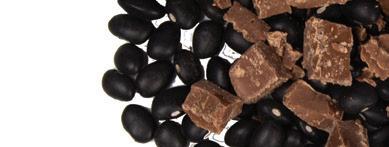




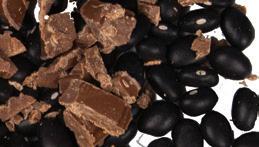





what does this mean for Indiana?
Some of the other foods at risk are corn, maple syrup, seafood, beans and cherries. Ultimately, Zimmerman said there would be a price increase on these foods no matter what because as a whole these foods will be less plentiful due to the changes in climate.

Locally, however, Zimmerman said there might be a potential upside. With the food from areas like California in danger, Indiana may see a growth in regional and local growing communities. Right now, Indiana imports nearly 90 percent of the food consumed in the state, according to a study by the Agricultural Marketing Service.
“If we can’t get our lettuce from California, maybe we’ll grow more of it here in Indiana,” Zimmerman said. “Maybe I’m not going to go to the supermarket to buy my lettuce. Maybe I’m going to go to the local farmer’s market.”
Indiana is the fifth biggest producer of corn in the United States, and as a whole, the United States is the biggest producer of corn in the world, according to the National Corn Growers Association. But the summer of 2012 brought with it a drought to the Midwest, which destroyed and damaged many crops.
She explains, however, that Indiana was part of a few areas where temperatures were colder, but everywhere else was warmer.
“When people talk about global warming and climate change, we’re looking at a global average,” Zimmerman said. “We’re not necessarily saying it’s going to be warmer in Indiana in the summer.”
The Washington Post reports that while temperatures in the United States have been colder, temperatures in places like Alaska and northern Europe have gotten much warmer. In Alaska, the average temperature over the past six decades has increased by around 3 degrees Fahrenheit, according to the Alaska Climate Research Center.
“Maybe I’m not going to go to the super market to buy my lettuce. Maybe I’m going to go to the local farmer’s market.”
- Petra Zimmerman
Increased heat and change in rain patterns during that year caused some crops and livestock to suffer in productivity.
According to the United States Department of Agriculture, crops that were affected included corn and soybeans. As a result, the prices of products such as animal feed increased, impacting the prices of animal products as well. Between June 2012 and June 2013, poultry prices rose 5.5 percent and egg prices rose 6.9 percent.
Zimmerman said that sometimes, people in Indiana would look at winters like the past year and assume that global warming is not happening because temperatures are getting lower than ever.
story by miranda carney
As prices of food from all around the country and world increase and become less plentiful, Zimmerman said people would have to start looking at how they can make a change.
“People don’t want to hear about it, because this could infringe on a lifestyle,” Zimmerman said. “Ultimately, it will. Someone is going to have to deal with not having any attention paid to it.”
In the future, the price labels on espressos might jump up. You may no longer be able to order lobster while on vacation or there could be a shortage of beans on the shelves of grocery stores. Climate change will shift how individuals produce, buy and eat foods; people would have to adjust to a new lifestyle.
But there is still time to combat climate change.
At the 2013 United Nation’s Intergovernmental Panel on Climate Change, Secretary-General of the United Nations Ban Ki-moon addressed the room of global government representatives and leading climate change scientists by saying that the power for change is in the hands of the people.
“The heat is on,” he said. “Now we must act.”



The placement of liquor in bars can have specific purposes. The back bar contains the most expensive liquor that a bar owns, as to display its best brands. The front bar utilizes the cheaper well liquor brands because it costs less and is more efficient. Typical well
This section contains a bar’s well liquor. The brand and order of the liquor can differ from bar to bar. The general order for a speed rack is vodka, gin, rum, tequila, triple sec, whiskey, scotch, bourbon and brandy. The speed rack is helpful for busy hours when bartenders don’t have time to think about what alcohol they are grabbing.
liquors are part of brands that mass produce their product, resulting in a lower quality of taste. The information graphic shows the basic bar setup, as well as the ingredients/processes that make top shelf liquor unique.
Scotch and bourbon are types of whiskey. The three liquors have different ingredients and processes.
• Scotches are specifically distilled three times and then put into barrels to age for about 10 years
• Bourbon must use about 51 percent corn mash for ingredients
“ “ IT’S MUSCLE MEMORY. YOUR PRIMARY ALCOHOLS ARE ALL IN THE SAME SPOT. YOU CAN GET INTO A GOOD RHYTHM.
GARRETT SMITH, CLEO’S BOURBON BAR HEAD BARTENDER
The front bar consists of a fridge, ice well and speed rack. Everything in the front bar is placed there for efficiency reasons.






Top shelves are usually stacked in no specific order. Bars tend to keep shelf liquor in order by type.
SOURCES: Garre Smith, Cleo’s Bourbon Bar head bartender, Amanda Meadows, night manager of the Muncie Liquors on Wheeling Avenue, “Drink This Not That” by David Zinczenko with Ma Goulding, icohol.com, greygoose.com, beefeatergin.com, tanqueray.com, sailorjerry.com, bacardi.com, remymartin.com 1800tequila.com, hornitostequila.com, makersmark.com, jackdaniels.com, ejbrandy.com, christianbrothersbrandy.com, shiftgig.com, louis-royer.com, skyy.com
The main difference between Top Shelf and well liquors is the quality. Each type of liquor is initially made in the same way with similar ingredients, but what mostly makes each of them different is the aging process and the additional
COMMON TOP SHELF VODKA




GREY GOOSE uses high quality wheat




REY GOOS SKYY filters with California limestone
VODKA Rye or or Wheat
COMMON TOP SHELF TEQUILA




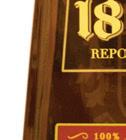











HORNITOS uses 100 percent agave 1800 uses agave aged for almost 12 years
BASIC TEQUILA INGREDIENTS
ingredients. Liquors considered “top shelf” are mostly meant to be drunk straight because of their smooth taste. Here are some of the top shelf liquors that are stocked at Muncie Liquors, and their basic ingredients.




BEEFEATER is bottled at 40 percent abv




TANQUERAY uses four handpicked botanicals
BASIC GIN INGREDIENTS
GIN and Cereal grains Juniper berries
COMMON TOP SHELF WHISKEY








MAKER’S MARK seasons each barrel for nine months








liquor with charcoal
BASIC WHISKEY INGREDIENTS











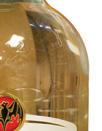





has a smooth taste that lingers after drinking

or or Wheat Barley







Does it seem safer to wear a bulletproof vest and hope it protects you, or to unload the gun before anyone gets shot?
Put another way, is the best option for birth control using barrier methods and procedures that decrease fertility, or stopping sperm from even having the chance to fertilize an egg?
A revolutionary birth control for men is expected to be on the market between 2016 and 2017, according to the Parsemus Foundation, a non-profit that works to advance neglected medical research.
Vasalgel, a non-hormonal form of male birth control would be administered in a single treatment by injecting a polymer into the vas deferens, the tubes that connect the testicles to the urethra. This polymer works by blocking sperm from passing through the tube while other fluids flow through.
without saying; the introduction of this male contraceptive levels the playing field for males and females.
Vasalgel is based on a similar polymer called Reversible Inhibition of Sperm under Guidance (RISUG), created by Dr. Sujoy Guha more than 15 years ago in India. Although this polymer is still being tested, it is being developed in the United States in correlation with Federal Drug Administration (FDA) standards.
“I would need to see a lot of research that would support how effective it is,” Nile Brandt, a graduate assistant for the Health Education Department, said. “It would have to be pretty conclusive.”
Brandt said that he would be curious as to what sort of “down time” would be required after the injection, if any, since a vasectomy requires a recovery period.
Vasalgel is a polymer gel that is injected into the vas deferens to block sperm from passing through the tubes while still allowing other fluids to pass.
A single treatment is expected to be as effective as a vasectomy, and could last for several years. This treatment is reversible by a second injection that removes the polymer.
I’d be okay with it. You’re kind of dealing with the problem at the source.
The question is— would men be willing to try this new type of birth control? The only forms of contraception that give men control of preventing pregnancy are withdrawal, condoms, spermicide and a vasectomy. Women have a variety of options to choose from such as female condoms, birth control pills and intrauterine devices. It goes
Dena Mullins, an instructor in the physiology and health science department, believes there would most likely be less recovery time because it would not be as invasive as a vasectomy.
“If this comes to market, I could see it eventually replacing vasectomy if it’s effective enough,” Mullins said. However, Mullins believes it will not become more popular than vasectomy for many years. She said the public would most likely be wary to try it until it has been available for a while.
Vasalgel trials in baboons have proved to be effective, according to
a 2014 Vasalgel update from the Parsemus Foundation. The trials injected three male baboons with Vasalgel and then put each one in a separate enclosure with 10-15 female baboons each, and no pregnancies resulted.
The Centers for Disease Control state that in 2006, 49 percent of all pregnancies in the United States were unintended. The highest rate of unintended pregnancies occurs in teens less than 15 years old, with 98 percent of pregnancies being accidental.
Still, initial opinions of the developing procedure seem optimistic, but skeptical.
“I think it would be fabulous if there was something else for a man to use, especially in a committed relationship,” Mullins said.
“I’d be okay with it,” Noah Rashid, a junior animation major, said. “You’re kind of dealing with the problem at the source.”
“The way of administering it seems kind of sketchy,” Chris Joy, a sophomore criminal justice major, said. “I kind of wish it would be more like a pill, like female birth control.”
“It sounds like it could be really helpful, especially since condoms aren’t 100 percent effective,” Rashid said.
Based on the birth control currently available, women have more options than men. Vasalgel would provide men with the opportunity to use a long-lasting, more effective method. This would give men more control over their futures and allow them to abstain from having children, without the commitment of sterilization.
story by alex kincaid
ADDITIONAL ONLINE CONTENT Learn the anatomy of male birth control by visiting ballbearingsmag.com
• Male condom: With perfect use, two out of 100 women will become pregnant each year.
• Female condom: With perfect use, five out of 100 will become pregnant. With typical use, 21 out of 100. A female condom is similar to a male condom, except it is shaped more like a pouch and has a soft ring at each end. The condom is inserted into the vagina with one ring covering the cervix and the larger ring on the outside covering parts of the labia.
• Spermicide: With perfect use, 18 out of 100. With typical, 29 out of 100. They kill sperm with the chemical Non-oxynol-9.
• Female birth control pill: With perfect use, less than one in 100. With typical use, eight in 100. “The pill” is taken once a day, at the same time. Different brands allow women to choose if they wish to have their period every month, every three months, or less frequently than that.
• Female patch: With perfect use, less than one in 100. With typical use, eight in 100. The contraceptive patch is a square that sticks onto the abdomen, buttocks, upper arm or upper torso.
• Withdrawal: With perfect use, four in 100. With typical use, 27 in 100. Sometimes referred to as “pulling out,” when the penis is removed before ejaculation occurs so that ejaculation does not occur in the vagina.
• Fertility Awareness: With perfect use, three to five women in 100. With typical use, 12 to 25 women in 100. Through months of observation, a woman is able to detect when she is most fertile, and chooses to only have sex when she is not ovulating.

Male condom is a common method of barrier birth control. With perfect use, two out of 100 women will become pregnant each year.


Double exposure, or multiple exposure, is a photography technique that combines two or more exposures into a single image. Some digital cameras allow the creation of double exposures through menu options, allowing the photographer to shoot one image, then record a second over the top. Double exposures can also be created with tools such as Photoshop, where photographers have more freedom to layer and manipulate two or more images to create an artistic visual effect. Double exposures are most often the pairing of interesting textures with strong graphic shapes like these.

















































































The strength and abilities of the human body can be shocking, with only a few doses of adrenaline and a concrete jungle to navigate. The combinations of these elements give rise to a sport called parkour.
Parkour is an extreme sport rooted in French military training. It originated from a training program for French Special Forces known as “Parcours de combattant”, or “The Path of the Warrior.”
Not to be confused with free running, parkour is the name given to a method of movement where obstacles are traversed with strength, endurance and speed. It may involve walking and jumping on small areas, rails and wall edges, leaping across buildings or vaulting walls.
The World Freerunning Parkour Federation (WFPF) defines it as, “the act of moving from point ‘a’ to point ‘b’ using the obstacles in your path to increase your efficiency.”
“Freerunning is more flowery,” said Ball State junior Nathan Davis, who has been practicing parkour since high school. “If I’ve got an eight-foot gap, I’m going to just jump across it; a freerunner would [exert more energy doing a] front flip over it.”
Although parkour is more common in urban environments, Davis explains that this environment is not necessary.
“You can practice most aspects of parkour anywhere, you just have to be respectful of the environment,” Davis said. “If all you have is a park bench, you can still practice your balance, practice your handstand or practice your vault. You have to make do with what you have.”
Parkour legends like Daniel Ilibaca, Tim Shieff or Pip Anderson make it look easy. But when broken down, parkour is a combination of basic moves such as balancing, running and jumping. These experts consistently practice these basic moves and, over time, build up the strength and endurance to move faster and jump farther.
“I’m not ruling out the possibility of using it in a practical environment,” Davis said, “but I learn parkour because it’s really fun. I like the adrenaline rush. I like seeing progress.”
story and photo by lauren dahlhauser

“I’ve tinkered with bikes since I was a young kid. We would go to the town dump with my father and I would drag bits and pieces of bikes out of the garbage and take them back to house. I’d put bikes together and it really fell by the wayside for years. When I graduated college in 1990, I decided I wasn’t ready to work yet, so I took the congratulatory cash you get from all your relatives and friends upon graduation and I bought a bunch of gear and pedaled across—I just really haven’t stopped since that point. I guess that economic degree didn’t do me a whole lot of good.”
















